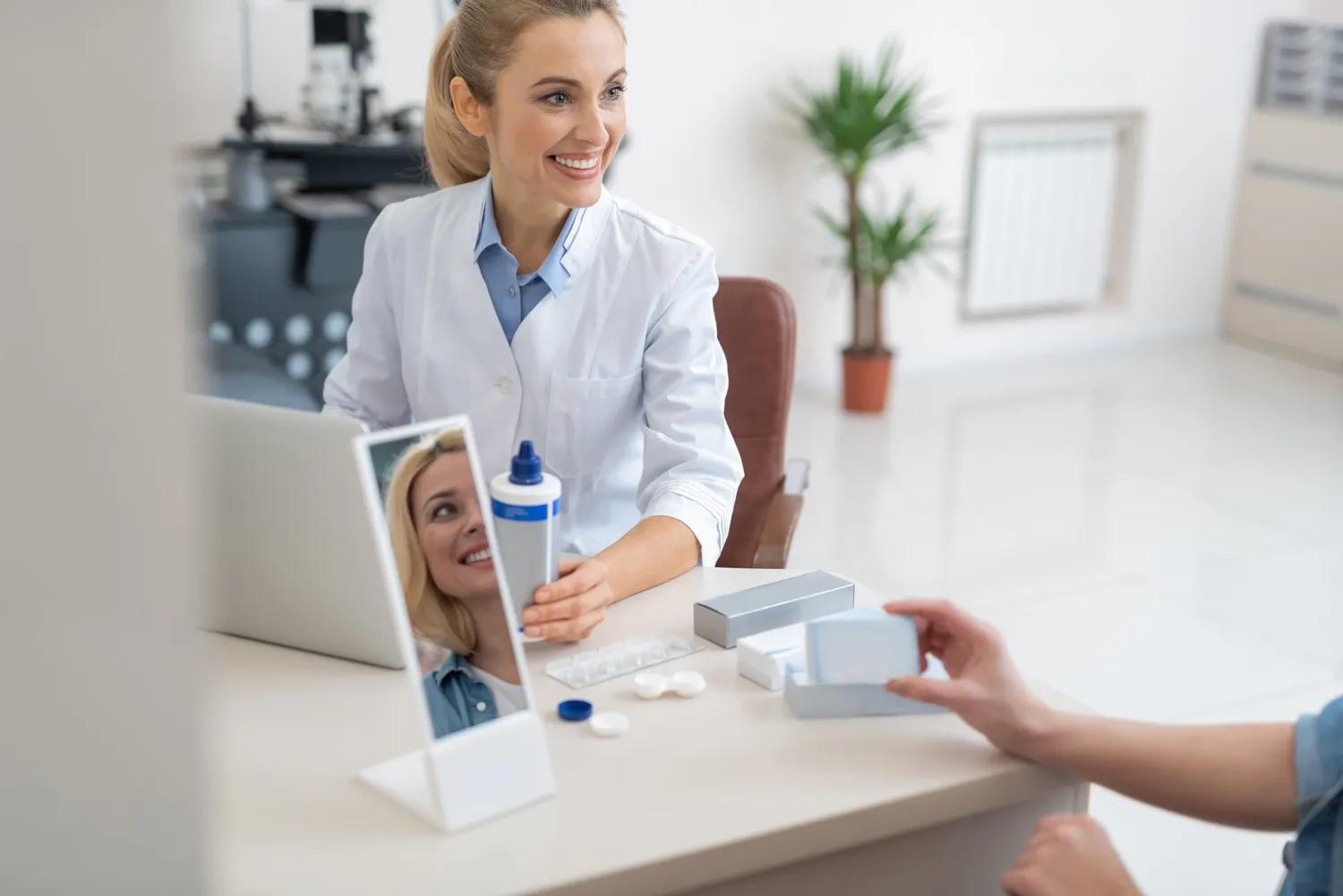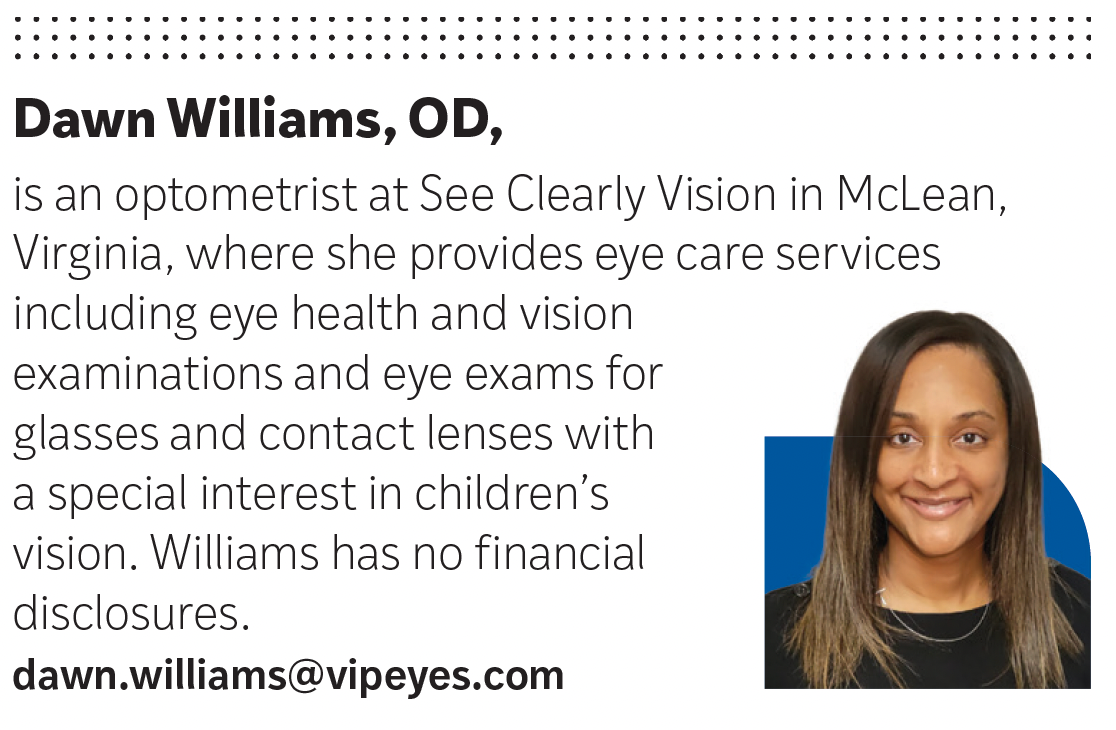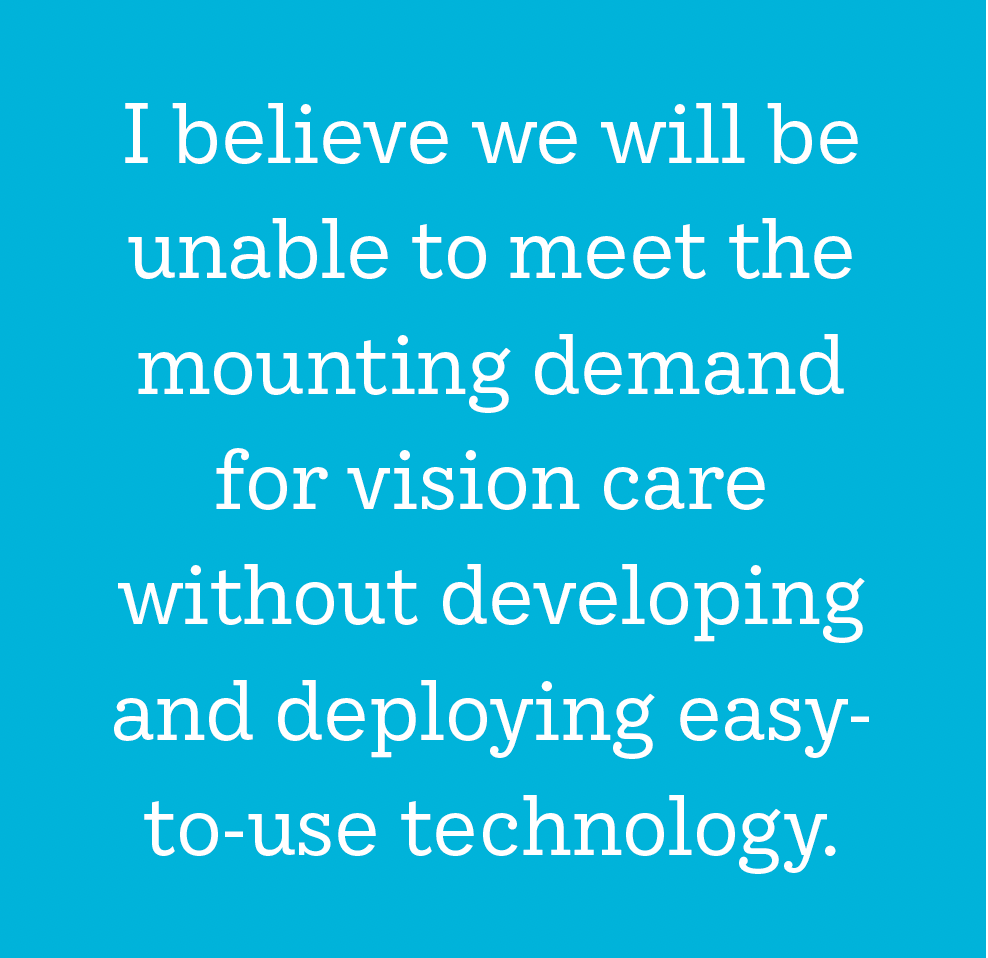Addressing the need for greater access in vision care
Education, advancing technology are key to meeting patient needs


Access to vision care is a growing concern in the United States and around the world. The aging of the baby boomer generation is putting greater demands on providers around the country, including our 5-doctor, 2-office practice.
I believe we need to utilize our staff as efficiently as possible to deliver the appropriate screening, diagnostic, and treatment services to the increasing patient population in our communities.
Better access to vision care is also essential for millions of people throughout the world who are in danger of losing their vision because of undiagnosed glaucoma, age-related macular degeneration (AMD), cataracts, nerve impingements, infectious diseases, severe refractive errors, and a host of other serious conditions.
Without convenient access to screening and diagnostic services, they risk losing their sight.
Recognizing the importance of reaching out to individuals and families, our practice has taken a proactive approach to improving access to care on a local, national, and global level.
I have taken part in a number of corporate and community screenings to identify vision problems at the earliest possible stage.
Related: 5 reasons optometrists have failed to embrace myopia management
To multiply the impact of our practice, our medical director has trained more than 2000 US ophthalmologists in laser vision correction techniques and lectured about the latest treatments to professionals in Mexico, India, China, and Europe.
We also have student externship programs with Pennsylvania College of Optometry at Salus University and the Inter American University of Puerto Rico School of Optometry to help educate future doctors on clinical decision-making.
The need for technology
While education is crucial for increasing the supply of professionals, I believe we will be unable to meet the mounting demand for vision care without developing and deploying easy-to-use technology.
That is one of the reasons our practice is actively involved in ongoing clinical trials for eye care medical devices and pharmaceutical products.
I enjoy staying ahead of the curve and our owner appreciates our ability to help patients who have been referred by other providers for specialized care.
Related: Heru advances visual field assessments

Virtual care
For the past decade, I have seen gradual advancements in screening technology that have improved access to care.
One example is the deployment of modern, handheld, mobile, non-mydriatic fundus cameras in primary care offi ces, where nonvision specialists can capture reliable imagery to detect potential problems. I prefer the Optomap (Optos), but there are several of these on the market.
Another digital health platform used by primary care is GoCheck Kids, a photo-based app that helps identify amblyopia risk in young children, so this patient base can be referred for further testing and treatment.
Two years ago, the COVID-19 pandemic created an urgent need for technologies to deliver virtual vision care to patients at home.
While surgical treatments and some diagnostic assessments still require trips to the office, many types of screenings, checkups, and follow-up care can now be provided through an easily accessible video platform.
While virtual services can be very helpful when managing individual patients, we need to continue to build on these existing technologies and find new ways to provide access to vision care on a large scale.
Fortunately, a few technology trends are making it possible to deliver vision care more efficiently in a doctor’s offi ce as well as in a remote setting: portable screenings, diagnostic devices, and the cloud.
Related: Top digital resources for prescribing
Cloud
Cloud-based platforms provide the foundation for connecting screening and diagnostic devices. They allow patient data and eye images to be uploaded from almost anywhere in the world and made available to vision specialists in real time.
New applications can be trained to compare those images to a database of healthy and diseased eyes, sending alerts to attending doctors or technicians at the screening site.
An example of this already in use is the ForeseeHome system from Notal Vision, which uses algorithms to alert doctors to statistically significant changes in visual distortion that are indicative of conversion to wet AMD in at-risk intermediate AMD patients who are using the remote monitoring system at home.
Related: Tech advancements in eyecare ft. Mile Brujic, OD, FAAO
Devices
Perhaps the most important element in improving access to care is device portability.
After all, it is difficult, if not impossible, for legacy instruments to be deployed and maintained in primary care offi ces, community health fairs, or remote, rural locations.
Consider carrying a heavy instrument over bumpy roads to an outdoor screening setting, finding a power source, and adjusting the equipment to provide accurate readings. I know this cannot be done easily without a team of skilled doctors and technicians.
Related: These digital tools for optometric prescribing are eye opening
State-of-the-art technology
To increase access to vision care and improve productivity, our practice has deployed the visual field diagnostic tool called re:Vive by Heru in our office with excellent results.
This portable, wearable headset has been well received by patients of all ages, especially those with mobility issues. Rather than hunching over to place a patient’s head on a chin rest, we simply slip the headset over their eyes.
The patient can then sit in any posture and hold and click a button for a quick and easy test for any visual field deficits. If pathology is detected, re:Vive automatically switches from screening to diagnostics and shows the results on the computer screen.
With this technology, our staff can screen a patient in 2 or 3 minutes, giving us more time to examine the eye for corneal, retinal, or refractive problems, and determine appropriate treatment.
Because re:Vive was initially used in my practice as part of a clinical trial, patients were required to agree to this screening procedure. There were some exclusion criteria, such as amblyopia or serious uncorrected refractive errors.
As a multimodal, portable, wearable, easy-touse technology, re:Vive by Heru has much potential in detecting visual field deficits in optometry practices, primary care clinics, and community health fairs, and on medical mission trips.
In that regard, I believe it could be a tremendous step forward to providing access to vision care for older Americans as well as underserved populations around the world.

Newsletter
Want more insights like this? Subscribe to Optometry Times and get clinical pearls and practice tips delivered straight to your inbox.